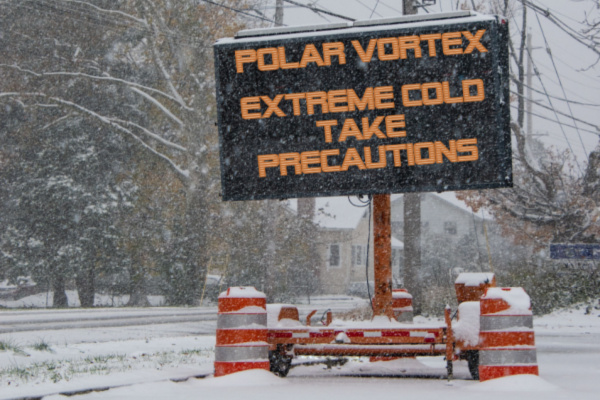If you spent much of last month shivering in the United States, you were not alone. A preliminary look at temperature data shows that the U.S. is likely to have experienced its coldest January average mean temperature since at least 2011, with records going back to 1895.
As AccuWeather reports, Climate Central’s preliminary findings for January showed that 166 out of 191 analyzed cities (87 percent) were cooler than normal. That included Alaska, where the warmest city, Fairbanks, was an astounding 14.6 degrees Fahrenheit above normal. They put the January departure from the historical average number for the nation at minus 2.9 F. This could rank as the coldest January since 2011, which is something AccuWeather meteorologists accurately warned about in late December.
Official numbers will be released by NOAA on Feb. 10.
A preliminary average of temperatures at more than 1,400 contiguous U.S. climate stations tabulated by the SERCC (Southeast Regional Climate Center) also shows a cold January, with a departure from the historical average of minus 2.5 F for January. Only northern Maine and the mountains of the West Coast saw above-normal temperatures in January.
Some Southern states had a top 5 coldest January
Preliminary data from the IEM (Iowa Environmental Mesonet) shows that South Carolina, Georgia and Alabama were among the coldest states in January compared to historical average. They will also likely rank in their top five coldest Januarys, as well as their coldest Januarys since the 1980s.
Many stations that went online in the 1990s and 2000s recorded January temperatures this year that were the coldest on record, according to the SERCC data. Among stations with records longer than 100 years, Gainesville, Florida, ranked the highest for January cold, with an average January temperature of 48.7 F, tying 1958 and 2003, and only exceeded by 1981 and 1977, which had readings of 48.5 and 48.3, respectively.
Over 5,000 daily snow and cold records were broken
According to NOAA, 4,630 daily record minimum temperatures (or record low maximum temperatures) were tied or broken during the month, along with 800 daily snowfall records.
A total of 25 stations measured the most snow they had ever seen in 24 hours, and another 25 broke all-time low temperatures for any time of year. The states of Louisiana and Florida preliminarily broke their state all-time 24-hour snowfall records during the record-breaking Gulf Coast snowstorm.
A cold month among many warmer ones
This below-normal January in the U.S. bucks recent trends, following 11 above-normal months. This is the first month that the U.S. has seen below-normal temperatures since January 2024, when mean temperatures were only slightly below normal, minus 0.46 F.
Seasonal snowfall update shows mixed results
Since the snowfall season began in October, the U.S. has seen mixed results for snowfall, with the northern Plains experiencing snowfall much below normal, while much-above normal snow has been recorded in the South and southern Midwest. While coastal New England and New Jersey has seen a dearth of snow, parts of the interior Northeast and mid-Atlantic are above normal.
And it’s not over yet
Looks like that darn groundhog was right. More winter is definitely coming. A widespread and impactful storm taking shape across the Midwest and Northeast will spread snow, freezing rain and sleet across several states through Thursday. Roadway and air travel can be severely impacted from the Midwest to the mid-Atlantic and New England coastlines as this storm trudges eastward. Power outages are a major concern due to the buildup of freezing rain on trees and power lines, followed by windy conditions expected to sweep in behind the storm.
—
Photo Credit: Alan Budman / Shutterstock.com
